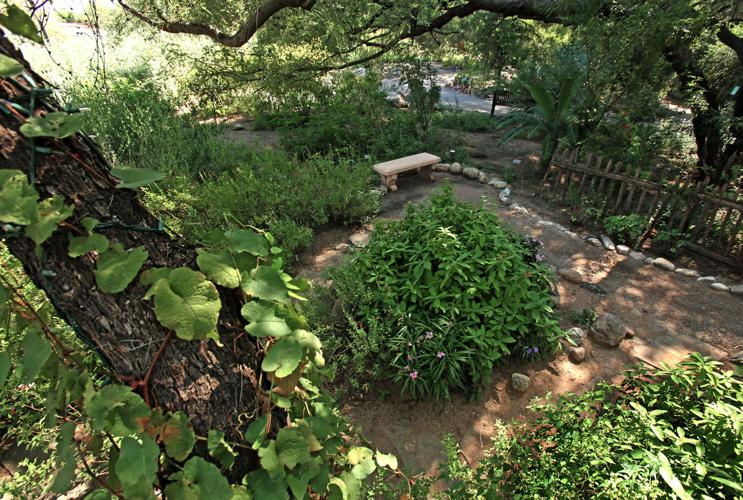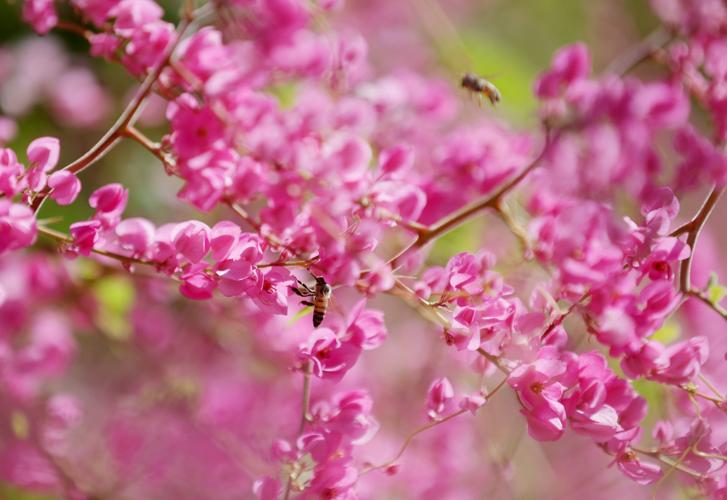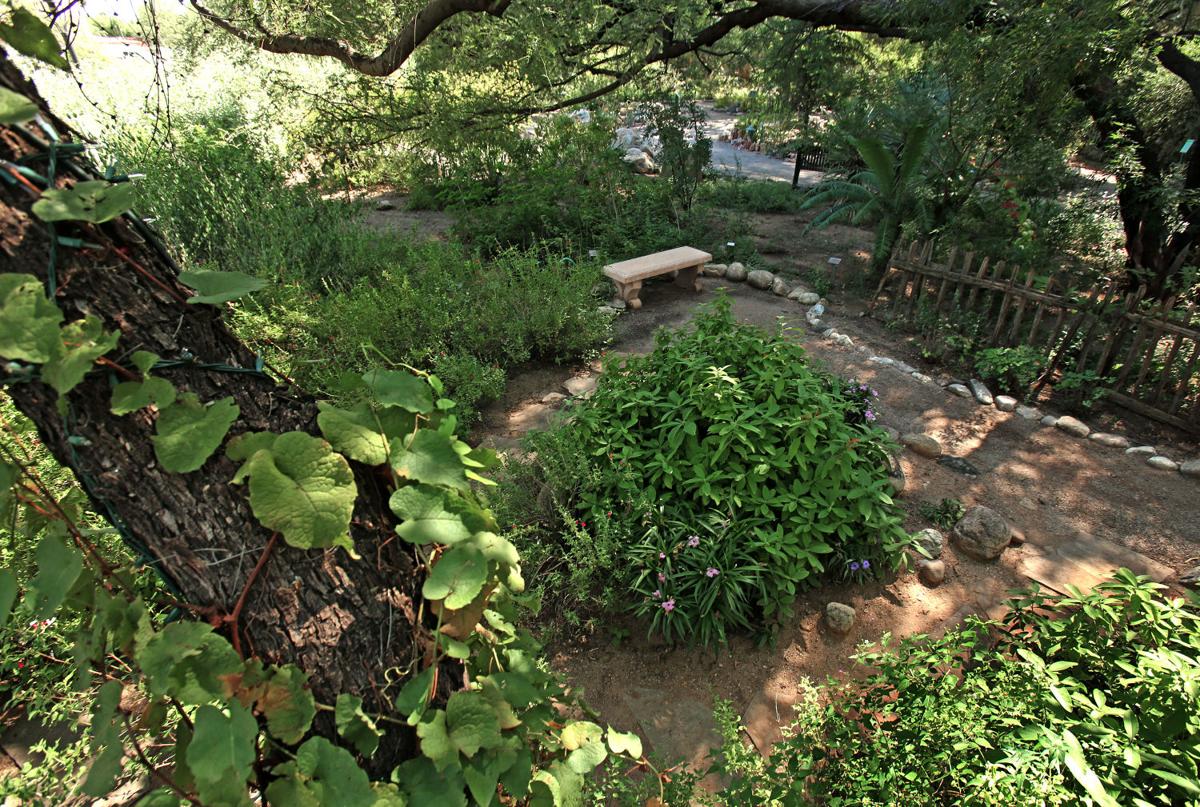It can be hard to find shade plants for our Tucson climate. There aren’t many plants that can tolerate our heat, dry alkaline soils, and don’t need a lot of sun. However, there are some plants that will do fine in shade or part shade. These can be found in the wild in shady canyons or growing under trees like mesquites, desert willows, Arizona ash and others.
There are a couple of possible strategies. You can go with native or desert-adapted plants or with non-natives that will require a lot of additional water. Obviously, I advocate the former, but if you’re really missing some plants that you don’t normally grow here, you could have a small shady area that has a separate watering system. That way you can grow some of your favorite plants but not pay too much for the water. If you go this route, I also recommend harvesting and using rainwater for much of your non-native plant irrigation. Not only is this free, but it also helps wash some of the salts out of the soil – salts which make growing non-native plants more difficult. Also make sure to add lots of organic matter to the soil if you’re growing non-natives.

Be ready for lots of bees if you plant Queen’s wreath vine in your garden. It also grows well in shade.
You can also consider growing food plants in part shade. Most non-native food plants require 50% shade cloth, so it may seem like a good idea to just grow them under a tree canopy. In practice, however, this is harder than it seems. The angle of the sun changes through the seasons, and the foliage on the tree changes as well. You may find that (especially in a smaller yard with limited space for veggie containers) it is difficult to get the right blend of shade and sun for your food plants.
I will focus on natives and near natives in this article. One thing of note is that while quite a few native plants can grow in shade or part shade, they are likely to flower less or be more leggy.
- Grasses: Try the Muhlenbergias, many of which grow in shady spots at higher elevations. One example is bamboo muhly (M. dumosa), which will do fine in shade, although it will be smaller than in full sun.
- Cacti: Many cacti can tolerate part shade quite well. One great example is the native night blooming cereus (Peniocereus greggii), which thrives in shade and has spectacular huge, fragrant blooms in the summer.
- Agaves: Variegated cultivars (ones with two colors) generally prefer part shade. One example is Agave desmettiana, which originates from Mexico and does best in part shade.
- Salvias: Many salvias will do fine in part shade, so check them out. One option is autumn sage, or Salvia greggii which does better in mostly shade. Salvias are great for hummingbirds and other pollinators.
- Vines: Many vines do well in part shade. A couple that I like are climbing milkweed (Sarcostemma cynanchoides) and crossvine (Bignonia capreolata). Queen’s wreath vine (Antigonon leptopus, also called coral vine) is also a good candidate.
- Flowering plants: Quite a few smaller flowering plants are fine with some shade. Here are a few you can try out.
- Arizona milkweed (Asclepias angustifolia) does well in filtered shade. This is a great plant for butterflies, including monarchs.
- Beebrush (Aloysia gratissima) grows larger, but is finely textured and doesn’t take up much visual space. It does well in part shade. It’s also a great plant for pollinators. Smells great, too!
- Gregg's Mistflower (Conoclinium greggii) actually produces more flowers in part shade and will attract lots of butterflies.
- Yerba mansa (Anemopsis californica) needs some shade and quite a bit of water, but it’s a small and very pretty plant. It’s a great plant to put right next to the irrigation dripper.
- Columbine (Aquilegia spp.) prefer shade, particularly in the afternoon. Two options for our climate are golden columbine and Arizona columbine.
Here's another resolution to add to your list for 2023 - get into the garden!.






